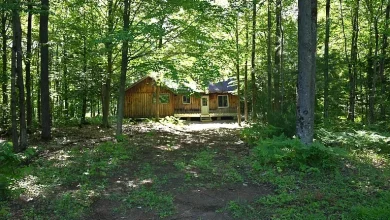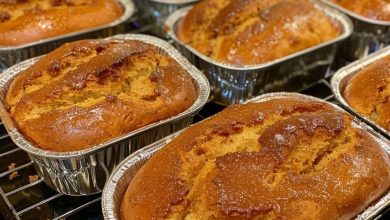
The Stovetop Toaster: A Nostalgic Kitchen Marvel That Defined a Generation
The stovetop toaster was once a staple in many households, a simple yet ingenious device that revolutionized breakfast routines. Unlike the modern pop-up toasters we rely on today, these vintage toasters were designed to sit directly over a cooktop burner, harnessing the heat from the stove to toast bread to golden perfection. With careful placement in the wire racks, users had to monitor the process closely, flipping the bread at just the right moment to ensure even browning. For many, this daily ritual was a mix of excitement and slight anxiety—hoping for that ideal crispness while avoiding the disappointment of burnt toast.
A Simpler Time in Kitchen Innovation
The mid-20th century was a golden era for kitchen gadgets, where practicality met ingenuity. The stovetop toaster was a prime example of how simple mechanics could create a delightful experience. Unlike today’s automated appliances that operate with the push of a button, these toasters required user engagement. Toasting bread became an interactive process, fostering a deeper connection between the cook and their breakfast.
Many of us who grew up in that era fondly remember the anticipation of waiting for the toast to be ready, the thrill of spreading butter onto a warm, crispy slice, and the rich aroma filling the kitchen. These experiences weren’t just about eating—they were about slowing down, taking a moment to appreciate the process, and creating small yet meaningful rituals in daily life.
How the Stovetop Toaster Worked
The stovetop toaster typically featured a simple wire rack, often in a triangular or rectangular shape, that allowed for multiple slices of bread to be toasted at once. The open design let heat from the stove reach the bread evenly, though users had to manually flip the slices to ensure both sides were toasted. Unlike electric toasters that dictate precise browning levels with timers and heat sensors, these required patience, skill, and a watchful eye.
Despite their basic construction, stovetop toasters were surprisingly effective. The direct exposure to heat provided a more customizable toasting experience—users could opt for lightly toasted bread or let it crisp up to a deep golden brown. This control is something that modern toasters, with their standardized settings, often lack.
A Symbol of Nostalgia and Connection
Kitchen appliances like the stovetop toaster are more than just tools; they embody a bygone era when cooking was a hands-on, mindful experience. Unlike today’s automated gadgets that remove much of the human element from food preparation, the stovetop toaster encouraged interaction. It wasn’t just about convenience; it was about involvement.
For older generations, the stovetop toaster represents a sense of nostalgia—a reminder of childhood mornings spent watching parents or grandparents prepare breakfast. The careful toasting, the smell of bread warming over the stove, and the satisfaction of achieving that perfect crunch brought families together. These small, seemingly insignificant moments became cherished memories that many still hold dear.
The Decline of the Stovetop Toaster
As kitchen technology advanced, the need for manual toasters dwindled. The invention of the electric pop-up toaster in the early 20th century changed the way people approached toasting. Suddenly, there was no need to stand over the stove, manually flipping bread. Instead, a simple dial controlled the browning level, and a spring mechanism ejected the toast when it was ready.
While the convenience of electric toasters is undeniable, something was lost in the transition. The hands-on nature of the stovetop toaster, which required attention and skill, was replaced with passive waiting. The sensory experience—the smell of bread toasting over an open flame, the slight crackle as the crust crisped up—became less pronounced.
Why Some Still Prefer Stovetop Toasters Today
Although electric toasters dominate the market, stovetop toasters haven’t disappeared entirely. Many people still appreciate them for their unique advantages. For one, they’re incredibly energy-efficient—since they don’t require electricity, they’re ideal for camping trips, off-grid living, or emergency situations. Additionally, they provide more control over the toasting process, allowing users to achieve a level of crispiness that electric toasters often struggle to match.
Some cooking enthusiasts also argue that stovetop toasters impart a better flavor. The direct heat from the stove creates a different texture and taste, giving the bread a slightly smoky, more complex profile. For those who enjoy traditional cooking methods, the stovetop toaster remains a valuable tool that modern appliances simply can’t replicate.
Bringing Back the Stovetop Toaster Experience
For those who want to relive the charm of the stovetop toaster, finding one today isn’t impossible. Many vintage models are still available through antique stores, online marketplaces, and specialty kitchen shops. Some manufacturers even produce new versions, catering to those who appreciate classic cooking techniques.
If you decide to try one, the process is simple yet rewarding. Place your bread slices in the rack, position the toaster over a low-to-medium heat burner, and flip the bread every few minutes until you achieve the desired crispiness. It may take a bit of practice, but that’s part of the fun—learning to perfect your toast the old-fashioned way.
Final Thoughts
The stovetop toaster is more than just a relic of the past; it’s a symbol of a time when kitchen tasks were more hands-on and engaging. While modern conveniences have made food preparation faster and easier, they’ve also taken away some of the joy and personal connection that come with cooking.
For those who cherish nostalgia, value control over their food, or simply enjoy a more interactive approach to cooking, the stovetop toaster remains a charming and functional piece of kitchen history. So, if you ever come across one, give it a try—you might just rediscover the simple pleasure of making toast the old-fashioned way.





